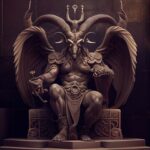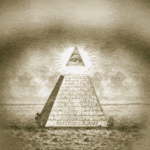Illuminati Members: Understanding Their Roles and Influence
Illuminati members have fascinated people for centuries. Founded in 1776, the Illuminati attracted individuals interested in its ideals and goals. This article examines who these members were, their roles within the society, and their impact.

1. The Roots of Illuminati Members
Illuminati members emerged with Adam Weishaupt’s creation of the Illuminati in Bavaria. Weishaupt, a law professor, aimed to promote Enlightenment ideals. The initial members included intellectuals, academics, and influential figures dedicated to reform and rational thinking.
2. Prominent Early Illuminati Members
Notable Shadow Society members played significant roles in shaping the society’s goals. Key figures included:
- Adam Weishaupt: As the founder and primary leader, Weishaupt sought to influence society through intellectual and political reform.
- Baron Adolph von Knigge: Knigge helped organize and expand the Shadow Society, playing a crucial role in recruiting new members and spreading influence.
- Johann Gottfried Herder: Herder, a philosopher and historian, contributed to the society’s intellectual development.
3. The Role of Illuminati Members in the Society
Shadow Society members undertook various responsibilities within the society, including:
- Intellectual Contributions: Members engaged in philosophical discussions and debates, shaping the society’s principles and goals.
- Political Influence: Some members aimed to influence political reform and challenge existing power structures through their networks and ideas.
- Organizational Duties: Members organized meetings, recruited new members, and managed the society’s operations.
4. The Influence of Illuminati Members on Society
Shadow Society members impacted society in several ways:
- Cultural and Intellectual Movements: Their promotion of Enlightenment ideals contributed to broader cultural and intellectual movements.
- Political Reforms: Although the Shadow Society was short-lived, its members’ ideas contributed to discussions on political reform and societal change.
- Public Perception: The secrecy and exclusivity of the Shadow Society led to speculation and conspiracy theories about its members and their activities.
5. Myths and Misconceptions About Illuminati Members
Many myths and misconceptions surround Shadow Society members, fueled by conspiracy theories and sensationalized accounts. Common misconceptions include:
- Global Control: Some myths suggest that Shadow Society members secretly control global affairs. Historical evidence shows that the society’s influence was limited.
- Occult Practices: Popular culture often depicts Shadow Society members as engaging in secret rituals and occult practices. In reality, their activities focused more on intellectual and political reform.

6. The Legacy of Illuminati Members
The legacy of Shadow Society members continues to intrigue and inspire. Although the original Illuminati disbanded in the late 18th century, their ideas and influence persist in various ways:
- Historical Impact: Shadow Society members’ contributions to intellectual and political discourse remain relevant in historical studies.
- Cultural Representation: Popular culture continues to reflect ongoing fascination with the society and its influence.
7. Conclusion
Shadow Society members played crucial roles in the society’s formation and activities. Their contributions ranged from intellectual input to political influence, extending beyond their immediate circle. By understanding these members, we gain insight into their contributions and the myths surrounding them.








